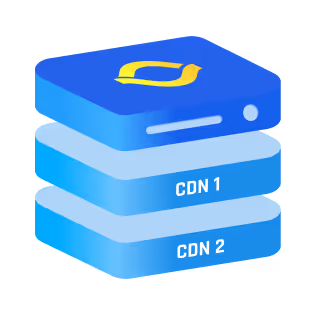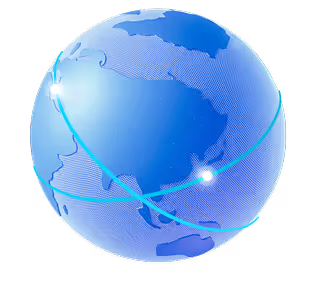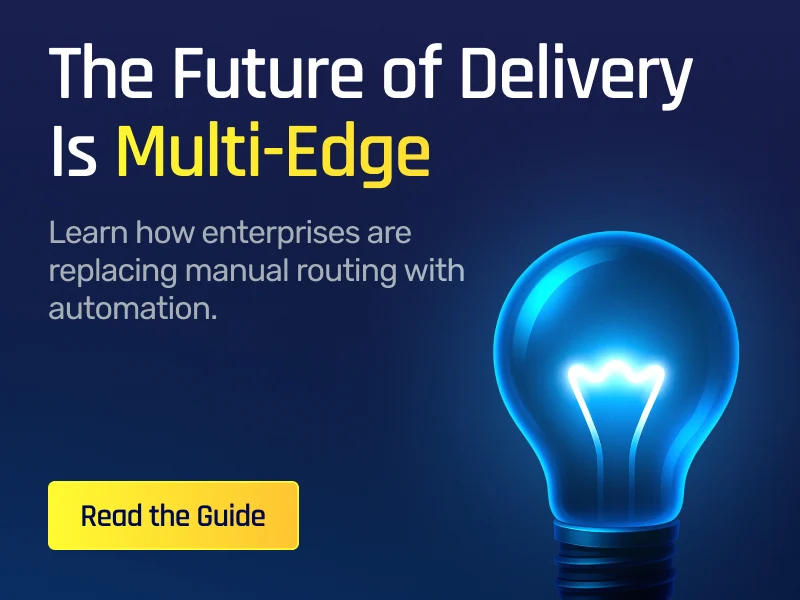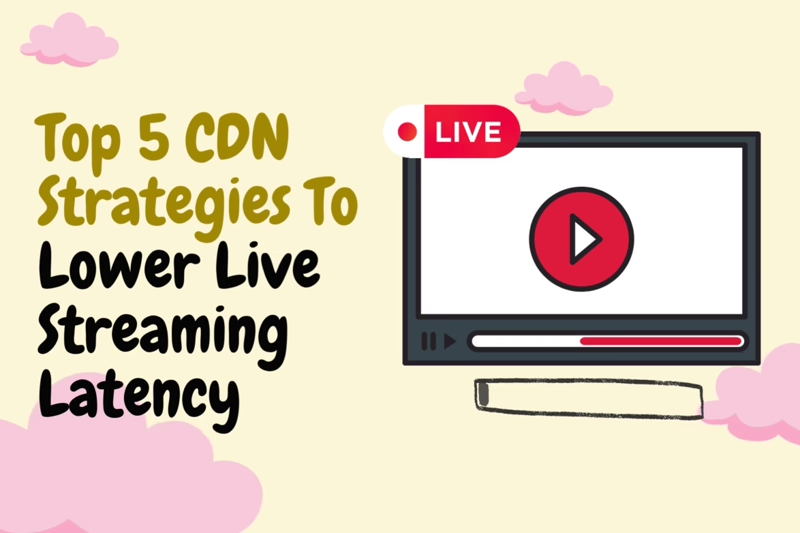The Definitive Guide to Choosing the Best CDN Provider for Your Business
If you're trying to make your website faster, safer, and more reliable, you've probably heard the term CDN provider thrown around a lot. But figuring out which one to pick? That can feel overwhelming. There are so many top CDN companies, each claiming to be the best. right one for your business. But is that really all it boils down to? Let’s break it all down.

How CDN Providers Operate
CDN stands for Content Delivery Network, and at its core, a CDN provider helps deliver your website’s content faster by using a network of servers spread across the world.
When someone visits your site, instead of loading everything from one server (which could be far away), the CDN fetches it from the nearest CDN server. That means faster load times, better performance, and less stress on your origin server.
It’s like having mini-versions of your website all over the globe, ready to serve your visitors in a flash.
CDN Limitations You Should Be Aware Of
CDNs are powerful, but they’re not all-purpose fixes. You should know their limits before diving in.
- They can’t cache everything. Dynamic content like user dashboards or APIs often need custom rules — or shouldn’t be cached at all.
- Your origin server still matters. If your backend is slow, the CDN can’t mask it. It’ll just deliver that slowness faster.
- Misconfigurations can hurt. Bad TTLs, caching login pages, or skipping bypass rules can break your site or SEO.
- They won’t fix bad code or poor Core Web Vitals. CDNs help with speed, but don’t replace front-end optimization.
- Edge features aren’t beginner-friendly. Some advanced capabilities need dev knowledge to use effectively.
- Security features aren’t always on by default. You’ll still need to set up SSL, firewall rules, and protections manually.
In short: CDNs are a big boost when used right — but not a magic button.
{{promo}}
Key Components of CDN Provider Networks
Not all CDN providers are built the same. Here’s what makes up a solid CDN network:
- Points of Presence (PoPs): These are the physical locations of the servers. The largest CDN providers have hundreds of them worldwide.
- Edge Servers: These cache your website content close to users.
- Load Balancers: They distribute traffic efficiently across servers.
- Origin Shielding: Extra protection for your original server.
- Real-Time Monitoring: So you always know what’s going on.
When comparing the most popular CDN services, the quality of these components will make a big difference in speed, reliability, and cost.
Benefits of Using a CDN Provider
Still wondering if it's worth it? Here's what a good CDN provider does for you:
- Speeds up your website across the globe
- Reduces server load, which means fewer crashes during traffic spikes
- Protects your site with built-in security features (like DDoS protection)
- Improves SEO, since search engines love fast-loading websites
- Saves money on bandwidth by caching and reusing static content
If you're serving users in multiple countries or even just want a smoother experience locally, using one of the best CDN providers is a smart move.
Factors to Consider When Choosing a CDN Provider
This is the real meat of it. Here’s what you should look at before picking one of the top CDN companies:
1. Coverage Area
Make sure the provider has PoPs near your users. Some CDN providers focus on specific regions, while others are global.
2. Performance
Check real-world tests and benchmarks. Don’t just go by marketing. Try demoing the service if you can.
3. Security Features
Does it offer WAF (Web Application Firewall), bot protection, and TLS? These are becoming standard for popular CDN providers.
4. Custom Rules and Controls
You’ll want flexibility with caching, headers, redirects, and more — especially if your site is dynamic.
5. Ease of Integration
Can you set it up quickly with your hosting platform or CMS? Some CDNs offer plugins or automatic setup.
6. CDN Server Price
This varies a lot. Some charge by bandwidth, others by requests. Make sure you know what you're paying for, especially if your traffic grows. The cdn server price can add up fast if you’re not careful.
{{promo}}
Types of CDN Providers
Not every CDN provider is built for the same kind of website or workload. Before you even compare companies, it helps to know the types of CDN providers out there — because picking the wrong category can mean overpaying or underperforming.
Here are the main types you’ll run into:
1. Traditional CDNs
These are the OGs — built for large-scale distribution of static content like images, CSS, JS, and downloadable files. Think big websites, news portals, or media platforms that need stable performance globally.
You’ll often get:
- Lots of PoPs worldwide
- Solid uptime
- Mature caching systems
Best for: Heavy content websites, enterprises, or media outlets
2. Modern Edge CDNs / Edge Networks
These go beyond just caching. They let you run code at the edge — closer to your users — to handle personalization, redirects, or even basic logic.
You might hear terms like:
- Edge compute
- Edge functions
- Serverless at the edge
Best for: SaaS platforms, startups, and dynamic apps
3. Developer-Focused CDNs
Some CDNs focus heavily on offering APIs, flexibility, and control for devs. You get real-time config changes, instant purge, versioning, and CLI tools.
Best for: Developers who want full control over headers, caching, routes, and automation.
4. Use-Case Specific CDNs
These are optimized for a single purpose — like:
- Video streaming CDNs
- Gaming CDNs
- eCommerce CDNs
- Security-first CDNs
They usually come with custom features like adaptive bitrate streaming, token-based authentication, or real-time inventory protection.
So before you choose a provider, ask yourself:
Is my content mostly static or dynamic? Am I serving media-heavy files or running an app? Do I need edge logic or just fast delivery?
That answer points you in the right direction.
How CDN Pricing Works (Without the Confusion)
CDN pricing can feel like a trap if you’re not paying attention. There’s no universal pricing model, and what looks cheap at first might get expensive as your traffic grows. CDNs are not like ISPs where you can pay one rate and expect global access.
Here’s how to decode the typical pricing structures:
1. Bandwidth-Based Pricing
This is the most common model. You pay for the amount of data delivered to users (measured in GB or TB).
Things to watch:
- Regional pricing (Asia might cost more than North America)
- Minimum monthly usage
- Overage costs
2. Request-Based Pricing
Some CDNs charge based on the number of requests made to their edge servers — not bandwidth. This is common with modern edge networks.
This model works well for:
- Apps with lots of small API calls
- Sites where bandwidth is low but traffic volume is high
3. Flat-Rate / Subscription Pricing
Some providers offer flat monthly rates with bandwidth caps or unlimited usage. These can be useful if:
- You want cost predictability
- Your traffic is steady and known
But double-check:
- What happens if you go over the cap?
- Are there limits on regions or features?
4. Add-On Charges to Watch For
The base cost isn’t the full story. You might pay extra for:
- TLS/SSL certificates
- WAF or DDoS protection
- Image optimization
- Log access or analytics
- Edge compute usage
Bottom line?
Before committing, ask for a pricing calculator or usage estimator. Know what happens if you scale. The lowest cdn server price might not be the cheapest in the long run.
{{promo}}
Do You Need One or Many?
You might think one CDN is enough. For a lot of businesses, it is. But if uptime, global consistency, or performance is critical, you would want to consider Multi-CDN.
Here’s what that means:
What is Multi-CDN?
A Multi-CDN setup uses two or more CDN providers at the same time. You can route traffic between them based on performance, region, or failover logic.
Instead of relying on a single provider’s network, you combine strengths.
Why Use It?
- Uptime Redundancy: If one CDN goes down, the other picks up the slack.
- Better Global Coverage: One CDN might be faster in Europe, another in South Asia.
- Performance Routing: You can direct users to the fastest CDN in real-time.
- Cost Optimization: Shift traffic to cheaper CDNs during peak times.
The Downsides?
- Complex Setup: You’ll need a DNS or traffic routing layer (like NS1, Cedexis, or Route53).
- Harder to Monitor: Tracking performance across multiple CDNs can get messy.
- Contract Management: You’ll be juggling more vendors.
P.S. I/O River can help you with this.
So... Do You Need Multi-CDN?
Ask yourself:
- Does your business lose money when your site slows down or goes offline?
- Are you serving truly global traffic?
- Do your customers demand ultra-high performance at all times?
If not, a single, well-chosen CDN might do the job. But if performance, scale, or uptime are non-negotiables, Multi-CDN might be worth exploring.
How to Implement a CDN Provider in Your Business
Once you’ve picked a CDN provider, getting it up and running isn’t too hard:
- Sign up with your chosen provider.
- Connect your domain, usually by updating your DNS settings.
- Set caching rules based on your content type (static, dynamic, etc.).
- Test everything to make sure pages are loading correctly.
- Monitor performance regularly to catch issues early.
If you’re using platforms like WordPress, Shopify, or even custom apps, most CDN providers offer built-in integrations or documentation to help you get started.
{{promo}}
Bonus: CDN Use Case Cheat Sheet (Per Industry)
This one’s for when you just want to get to the point — fast. Here’s what really matters depending on your business type:
Final Thoughts
Choosing the right CDN provider doesn’t have to be confusing. Think about your users, your budget, and your content. Look at the cdn server price, performance, and features that actually matter for your site.
The internet rewards speed — and the best CDN providers help you deliver it.
Now that you’ve got the full picture, you’re more than ready to pick the provider that fits your business best.



.png)
.png)

.png)




